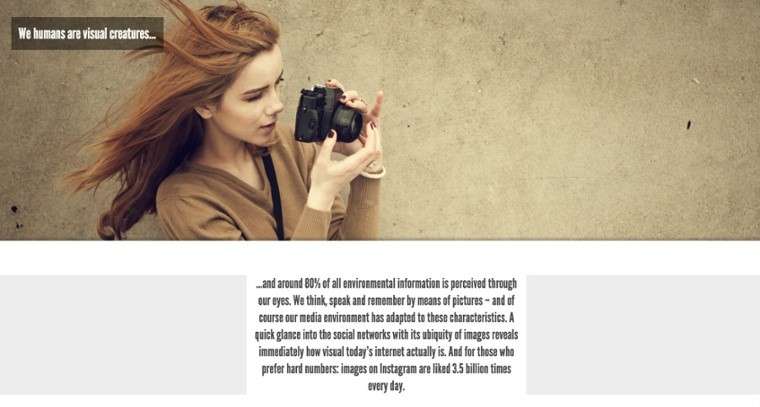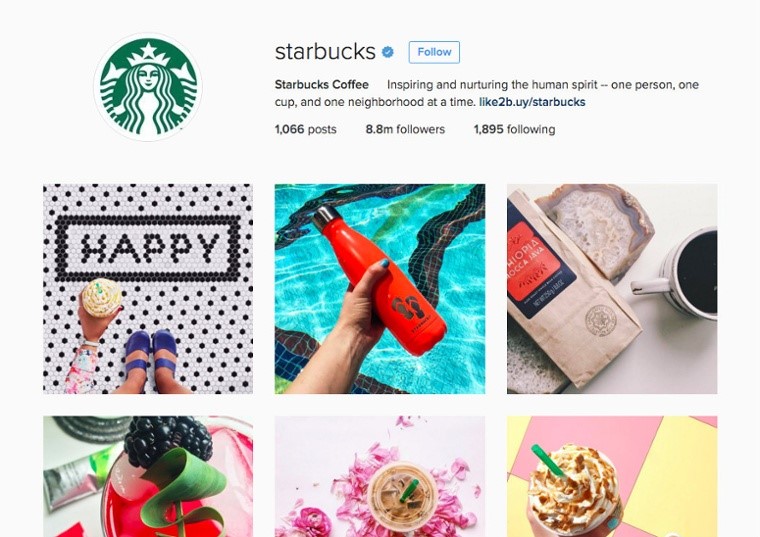This post originally appeared on Kuno Creative’s blog and was reprinted here with permission. View the original here. If you’d like to submit a guest post, email AMA Austin volunteer Bana Jobe at bjobe@marketwave.biz.
While GE has consumer-facing boards on Pinterest, it’s the company’s B2B boards that get the lion’s share of attention—especially its Badass Machines page. It features the “biggest and baddest technologies produced by GE.”
What’s sparking this major attraction? In a word, visuals. GE creates epic behind-the-scenes photos of everything from jet engines to gas and wind turbines. While GE’s products may not seem to be inherently visual, like food or fashion, close-up images of powerful machines are awe-inspiring. Which is why people can’t get enough of them. So much so that GE also posts the images on its popular Instagram page.
GE is one of thousands of companies investing heavily in the power of images to attract, fascinate and engage their target audiences. While in the past the power of images was quantified by a single number—“a picture is worth a thousand words”—today, a wide variety of numbers are quantifying the impact of images. Here are just a few:
- 87 percent: the percent of Pinterest users who said they’ve purchased something because of Pinterest
- 94 percent: how much more articles containing images are viewed versus articles without images
- 3.5 billion: how many times visuals on Instagram are liked every day
- 8 billion: the number of times videos are viewed on Facebook every day
Why Visuals Matter
Fotolia created an Adobe Slate to display its list of reasons why visuals are powerful. It adorned its list with dozens of powerful photographs extracted from its online photo marketplace.
Here are five of the reasons why visuals are important:
- Images are fast. Our brain captures image content in a split second and as a coherent whole, whereas text must be read to be understood.
- Images arouse curiosity. Visuals appeal directly to our archetypal human interest in things that are new.
- Images evoke emotion. Images are processed in our right brain, which is associated with imagination, intuition and feelings.
- Images are remembered. Our memory for visual stimuli is more pronounced than that of linguistic information.
- Images tell stories. Images have high entertainment value. They set the imagination of viewers into motion, eliciting engagement and involvement.
Visual Marketing Options
The companies galvanizing the power of images to boost marketing impact are using a wide range of visuals along with photographs. Here are the most common visual mediums:
- Infographics. With their bite-sized information chunks and visuals, these graphics are easily digested, simple to understand, and interesting to look at. They can be shared easily through social media, like Facebook, Twitter, Digg, Reddit, StumbleUpon and more. Companies can add their logos without being obtrusive, and get a boost in their online presence and branding.
- Slideshows. Although each slide can benefit from brevity, slideshows can contain multiple images. This gives them the ability to contain more information (or data) than infographics or single images. The traffic generated from a slideshow can be targeted, such as on platforms like SlideShare. Also, companies can create them using repurposed existing content.
- Videos. The power of video is undeniable. Video has been on an upward trajectory for the past several years, with no end in sight. Companies can create videos covering a wide range of contexts, upload them to YouTube, Vimeo or Wistia, and then embed them right into a post or share directly to social media.
- Data visualization. Boring charts and graphs are so last century. Today, companies are jazzing up data by producing innovative and creative visuals to communicate a wide range of facts. A truly stunning data visualization becomes more than the sum of its parts, turning a simple spreadsheet into something that can measure progress and be remembered.
4 Principles of Visual Storytelling
So now you’re likely inspired to leverage the power of images in your content marketing to stand out and attract your potential customers. How can you make sure you’re producing riveting, authentic and attention-grabbing yet relevant images—especially considering today’s saturated visual world?
NewsCred partnered with Getty Images to compile the four principles of visual storytelling—authenticity, sensory, archetype and relevancy.
AUTHENTICITY—REAL RULES
Who would have ever thought that thousands of images of coffee culture would be noteworthy, let alone hugely popular? Yet, that’s one of the key reasons Starbuck’s social media is so popular among coffee lovers. Customers even share images of their daily drinks. The key factor the company is tapping into is authenticity—having a cup of coffee is a daily ritual for the vast majority.
According to Getty and NewsCred:
“In the age of the selfie, people want something that speaks to them personally. Images that come off as constructed, airbrushed or posed no longer resonate. People want the unpredictable, but familiar at the same time. They want real, candid moments from everyday life. … Authenticity taps into the passions and emotions of an audience, letting them see something of themselves in the images and turning them into eager advocates of the story you’re trying to tell.”
Fun fact: Olapic co-founder Jose de Cabo discovered that “users who click on real-life people are twice as likely to convert to a sale,” as reported in the Wall Street Journal.
SENSORY—MEMORIES MATTER
Can images illicit smells or sounds or texture? Not literally. However, they can tap into our sensory memories to the point that we think we can smell, hear and taste images. That’s why tapping into our memories is a potent principle of image creation.
According to Getty and NewsCred:
“We want zoomed in, we want high detail; wrinkles, textures—the nitty-gritty. We want to go beyond pixels, we want to smell and touch. A striking image strikes for just that very reason. All-encompassing visceral exposure draws on a viewer’s memories, past sensations and experiences, building stronger connections in the brain. Our culture has succumbed to information overload, but our senses still yearn to be stimulated.”
Seraph Science captured this principle using sensory images in a short but evocative slideshow on B2B marketing.
ARCHETYPE—DNA DEEP DIVE
There are many memorable figures in today’s marketing world—Steve Jobs, Richard Branson and Jeff Bezos, to name a few. These are powerful characters who fuel a narrative by embodying a relevant archetype, such as the Hero, the Explorer or the Ruler. Companies with famous leaders leverage their archetypes to expand their brands.
But companies without famous leaders can still leverage the power of archetypes through visuals. Just look at these three classic, powerful brand archetypes as examples:
- Jeep: The Explorer. Seeking the open road and exploring new places.
- PBS: The Sage. Seeking wisdom to understand the world and their place in it.
- Harley-Davidson: The Rebel. Breaking rules, taking risks and expressing their individuality.
According to Getty and NewsCred:
“Archetypes are written in our DNA and are just as powerful today as they were at the dawn of humanity. … The most relevant branding archetypes, for instance, are Caregiver, Jester, Lover, Outlaw, Explorer, Creator, Hero, Magician, Sage, Ruler, Innocent and Everyman. Through understanding the archetypal stories that shape our culture and values, brands can create more engaging content and better connect with their audiences. The sweet spot happens when you find an image that taps into something ancient, timeless and universal, yet is incredibly contemporary.”
Harley-Davidson evoked its iconic archetype in an infographic created from a study on women Harley riders.
RELEVANCY—GUT REACTION
Is your marketing sensitive to locations, cultures and real-time? If so, you’ve captured the power of relevancy—a potent component of power visual storytelling.
According to Getty and NewsCred:
“The difference between a great photo and a forgettable one is an instant gut reaction—you know it when you see it. That’s why it’s vital to keep on top of the game and ahead of the crowd, delivering localized content in real-time. Know your audience and trust them to open their minds. … To connect with audiences, choose images that capture a moment in real time and make relevant connections with how we live our lives today. The best visuals are immediate and timeless effortlessly and simultaneously.”
Rackspace did an awesome job of capturing relevancy, as well as authenticity, in its “Day in the Life” video. You literally cannot look away once you click play.
July 22, 2016





Comments